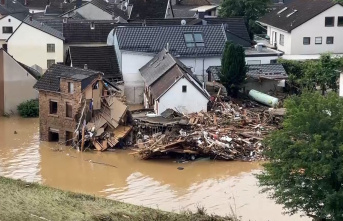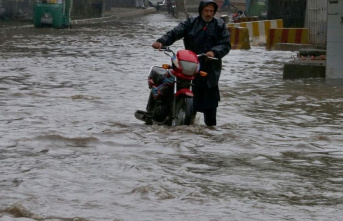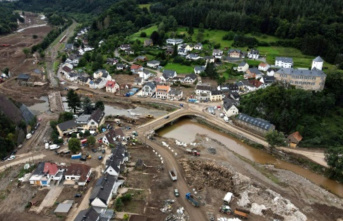Firefighters battled the flames until the wee hours of Tuesday morning in Odessa. The third largest city in Ukraine and the main Black Sea port, whose silos store hundreds of tons of grain, has been under an intense Russian offensive for several days. The missiles now fall almost daily, and on Monday night they fell over the center of the city. They impacted some commercial galleries and a warehouse. At least one person has died and five others have been injured. The center of Odessa has been covered by smoke from the explosions and the large fires they have caused.
The Russian army, which fires from the Crimean peninsula and also from its fleet in the Black Sea, launched seven projectiles on Monday, four of which were Onyx precision missiles that hit their targets. The other three were hypersonic missiles, according to the Center for Defense Strategies, a Ukrainian think tank that follows the war. The think tank identified the projectiles as Kinzhal (Dagger), the hypersonic air-to-surface missile that Russia used for the first time in the world on March 18 against an arms depot near Ivano-Frankvisk in the west. It can fly at five times the speed of sound and has a range of 2,000 kilometers.
The missiles that landed around 10:30 p.m., however, missed, unless the purpose had been to frighten the civilian population. The use of advanced guided missiles allows Russia to fire from aircraft at a distance without being in Ukrainian airspace and exposed to possible anti-aircraft fire. But Ukrainian, British and American officials warn that Moscow is rapidly wearing out its precision weapons and may not be able to increase the pace of their manufacture, raising the risk that more inaccurate projectiles will be used as the conflict progresses. This could result in more civilian deaths and other collateral damage.
Russia has attacked many civilian infrastructures, as well as schools and hospitals throughout Ukraine, in a clear violation of international humanitarian law. Thousands of civilians have died as a result of these indiscriminate bombings, completely unrelated to military objectives.
The President of the European Council, Charles Michel, visiting Odessa, had to take refuge from the Russian offensive. He was already in Kyiv a few days ago, but now in the southern city he wanted to highlight the absurdity that Ukrainian cereals cannot travel to low-income countries that need them so much because Russia blocks maritime traffic.
NATO has so far rejected calls by Ukrainian President Volodymyr Zelensky to force the Russian navy to lift the sea blockade on Ukraine.
The attacks on Odessa came after Russian President Vladimir Putin celebrated the day of the Soviet victory over Nazi Germany, the largest patriotic holiday in his country, without being able to boast of new progress in his so-called "special military operation". " in Ukraine.
So far, it has not managed to occupy any large Ukrainian cities. Odesa is far from their positions and, moreover, it is very well defended. The only alternative he has is to attack it with long-range missiles. These rockets have destroyed the railway linking the Moldovan and Romanian borders, a vital line for receiving supplies.
However, the Russian army maintains a devastating fire force in the Donbass and continues to attack the Mariupol Azovstal steelworks with artillery and tanks. It is precisely in this eastern region, which Russia aspires to annex, where the bodies of 44 civilians have been found buried in the rubble of a building destroyed by a Russian bombardment in March, in Izium, a city located on the Donetsk River, in the Kharkiv region. The five-story building collapsed with people inside, the regional governor, Oleh Sinehubov, reported on Tuesday on his social media. "This is another horrific war crime by the Russian occupiers against the civilian population!" he lamented.
Russia recently captured the city of Izium and from this point it plans to launch itself on Kramatorsk, the key place that will decide the Russian offensive towards Donetsk and Luhansk, the self-proclaimed republics of eastern Ukraine.
4












